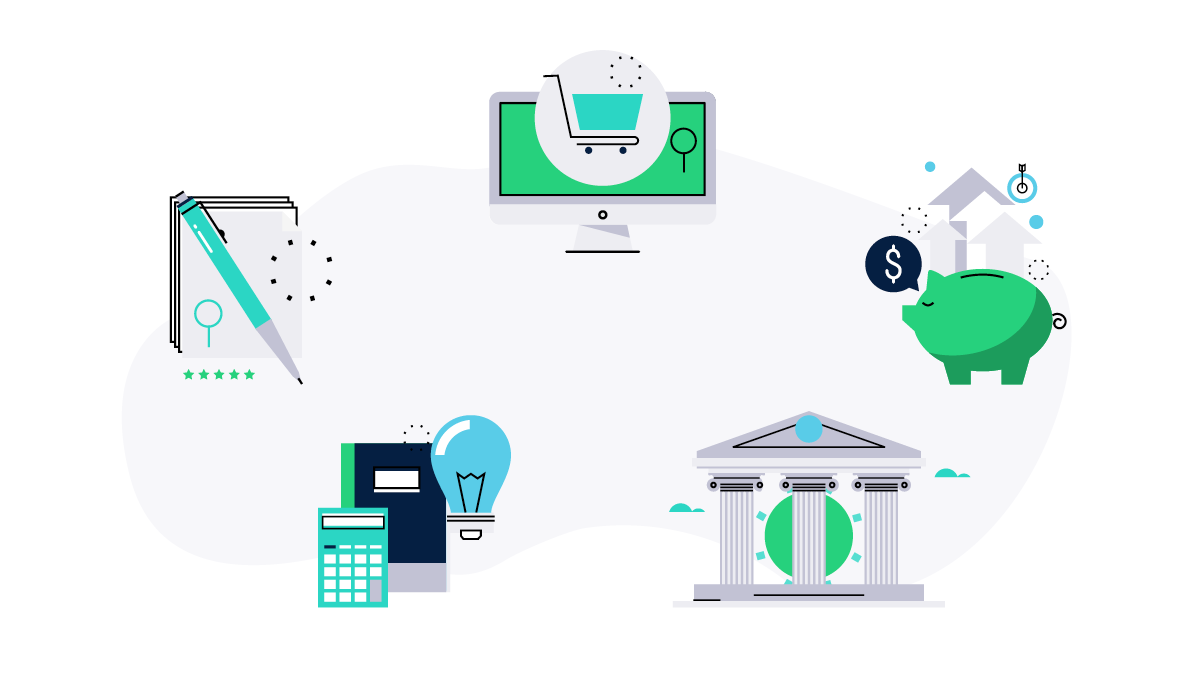5 Simple Steps to Get a Bank Account
A bank account is a necessary tool for managing your financial wellness, your income and paying for the things you need to live. Most companies pay employees via direct deposit, and almost all financial transactions can be completed using a bank account.
Although a bank account makes life much simpler, setting up a bank account can feel intimidating. Follow these five steps to find and open the perfect account for your needs:
1) Get familiar with your basic bank account options:
- Checking account: Full access to your funds with no transaction limits. Not intended to be an interest-earning account.
- Savings account: You won’t need to access the money in this account often, so it can accumulate some interest as it sits.
- Money market accounts, certificates of deposit, and individual retirement accounts: Specialized savings accounts aimed at accruing interest, saving for specific periods situations, or holding your money for predetermined periods of time.
2) Choose a bank
When it comes to opening your first account, is the bank you choose really that important? Or are they all pretty much the same? Here are some key differences to consider:
National banks, also called megabanks, have a strong presence in larger cities. Some people who need to do extremely frequent in-person banking (for example, those who need to deposit cash on a daily basis) may find that a megabank with many branches is convenient.
However, megabanks can be frustrating for a first-time banker, as they enforce rigid processes and usually use impersonal, hard-to-navigate toll-free customer service numbers. Services like checking and savings accounts usually come with fees to open or use the account.
Local banks offer many benefits for someone who is opening a bank account. Typically, local banks are able to offer a greater level of personal service. Because the bank is smaller, a knowledgeable employee can take care of your needs without passing you to a variety of departments (or worse, a toll-free customer service line).
Because most of a local bank’s activity is based on regular consumers like you, rather than wealthy investors and corporations, they are likely to offer checking and savings options tailored to first-time bankers.
3) Research bank account options
Along with picking a bank that meets your needs, you’ll need to find an account that is just right for you. It will be helpful to familiarize yourself with some of the terms you’ll encounter as you shop around.
Checking Accounts are ideal for your day-to-day financial transactions. You’ll deposit paychecks into your checking account, and use those funds to pay bills, buy goods, and withdraw cash.
- A basic checking account usually offers few restrictions and requirements. For example, many have no minimum balance requirement, no limits on how many transactions you can make in a month, and few fees.
- A rewards checking account will pay interest based on how much money is kept in the account. Typically, this kind of account has more requirements to open and maintain the account.
Savings Accounts are most often used to store money for emergencies or large purchase goals, such as a car or vacation. Most savings accounts pay a modest interest rate called an Annual Percentage Yield, or APY. Almost all savings accounts restrict the number of withdrawals you can make before charging a penalty fee.
- A basic savings account usually has low fees and minimum balance requirements, with an average APY around .10%
- A money market account is similar to a basic savings account, except that APYs are based on market rates which increase with the amount you put into the account.
- A certificate of deposit (CD) requires that you leave your money in the account for a predetermined amount of time, then you can withdraw with your interest earnings. APYs for a CD can range from .15% to .80% and above, depending on how much you save and the length of your CD term.
4) Gather documents & open your bank account
Prepare to provide some essential information to open your account.
- Photo identification, such as your driver’s license, passport, military ID, etc.
- Social security number
- Mailing address and possibly a bill in your name with your address
- An initial deposit (if required)
Visit the bank with your documents to open your account, or visit the bank’s website. Some banks allow you to complete the new account process online.
5) Start using your bank account
Congratulations, you’ve opened your bank account! Use that debit card wisely, and check your account frequently to avoid overdraft fees and watch for any fraudulent activity.
You’ll also need to familiarize yourself with your ATM options for cash withdrawal…and with ATM surcharges. Almost all banks allow you to withdraw cash for free at their branch ATMs, but many banks also have an extended network of no-charge ATMs you can access. ATM fees can put a dent in your finances, so check your bank’s website for clarification. Enjoy your newfound financial wellness and freedom!








